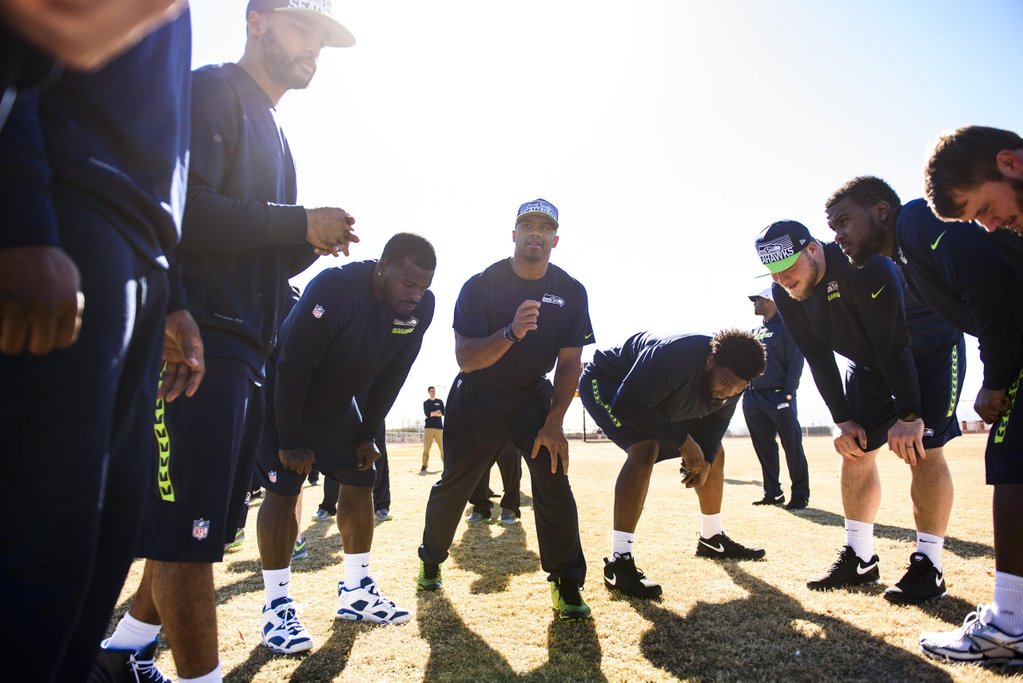Imagine shopping for linebackers. You see a deal that gets you 99 tackles, two sacks, three tackles for loss, and 1 interception that will cost $1,960,000. On the other shelf, there is a choice to get 29 tackles, no sacks, no tackles for loss, and no interceptions. You check the price tag and see a whopping $5,076,250. For less than half the price, the first option provides more than triple the production. Oh, and by the way, it represents three starters where the other is just one. That first deal, as you may have guessed, is the combined 2011 salaries of Leroy Hill ($685K), David Hawthorne ($900K), and K.J. Wright ($375K). The other option is former Seahawks Aaron Curry. Even if you throw in promising back-up Malcolm Smith, the four linebackers would still cost less than half of Curry’s deal.
This represents a quantum shift from former GM Timmay! Ruskell, who infamously spent nearly a third of the team’s salary cap on Lofa Tatupu, Hill and Curry. They were to be the foundation of his defense. Only Hill remains from that starting trio, and was only re-signed because of the greatly depressed market for his services. Current GM John Schneider owes Ruskell a tip of the cap for signing David Hawthorne as an unrestricted free agent and bringing in Hill. He might follow that with a kick in the pants as he gets stuck with Curry’s contract. Given the quality of linebacker additions under Schneider for very little investment (e.g., Smith, Wright, Matt McCoy), he deserves the benefit of the doubt that he can add quality players at small prices. He also properly separated the wheat from the chaff, by keeping Hawthorne and re-signing Hill, while showing Tatupu the door.
Terrific bargains like the Seahawks enjoy at linebacker have to be rare, right? Not necessarily. Push your shopping cart past the linebacker aisle and into the secondary aisle. On one shelf you see 89 tackles, 1 sack, 3 tackles for loss, 11 passes defensed, 3 interceptions, 3 forced fumbles, and 1 touchdown for a price of $1,560,000. Across the way, there is 23 tackles, 1 interception, 1 tackle for loss for $3M. And again, the first item includes four players, all of which have started. In this case, the bargain is Kam Chancellor ($405K), Brandon Browner ($375K), Walter Thurmond ($405K), and Richard Sherman ($375K). They cost almost exactly half of Marcus Trufant’s 2011 salary of $3M.
It is debatable whether any one of those cornerbacks are as good as Trufant when he is healthy. The goal is not just to get cheaper players, but to improve the talent. Chancellor is already a more valuable player than Trufant, and his ceiling has yet to be determined. The quality of play in the secondary has not dropped off since Trufant has left. There is at least some evidence to suggest things have improved. There is no credit to be shared with the former regime here. In less than two seasons, the entire secondary has been made over with far more talent at a far smaller price. Byron Maxwell has yet to get his real shot due to injury, and he showed that he might fit right into this group for just another $375K.
All this matters when evaluating other player decisions made this off-season. Matt Hasselbeck was roughly $3-4M more expensive than Tarvaris Jackson. Colin Cole was going to make about $1M more than Alan Branch. Those seem like small differences, but when you see how far Schneider can stretch $3-5M, it should re-orient fans thinking a bit. Hill was brought in for less than $1M. Branch signed for $2.5M this year. Atari Bigby was $685K. Clint McDonald cost $405K. That’s $4.5M right there. Keep that in mind as this roster continues to evolve. This is what it means to build through the draft, and it is a wonderful thing.
NOTE: All salary information was based on the great work of Davis Hsu who writes for FieldGulls.com on occasion. You can find his roster spreadsheet here.
